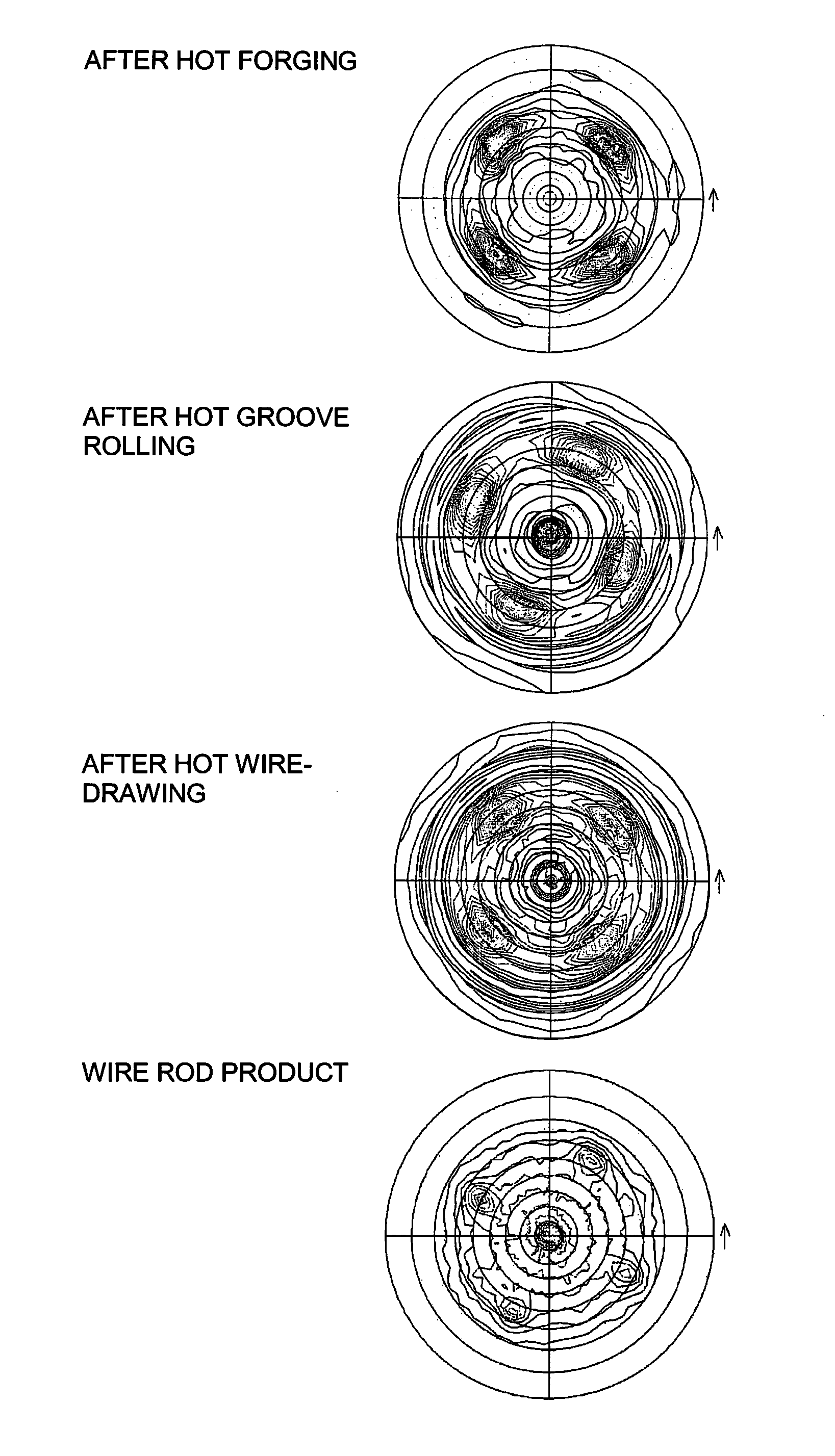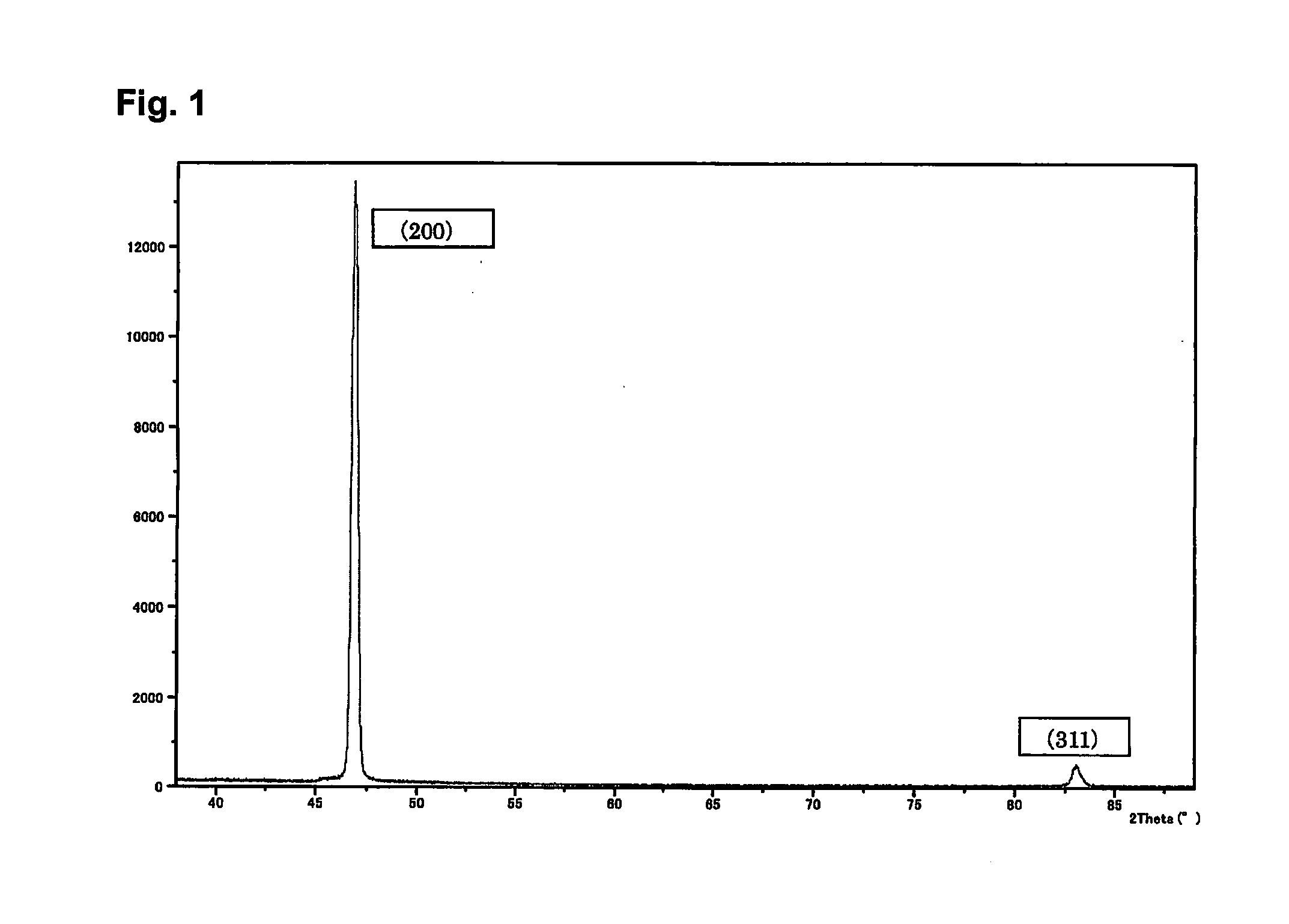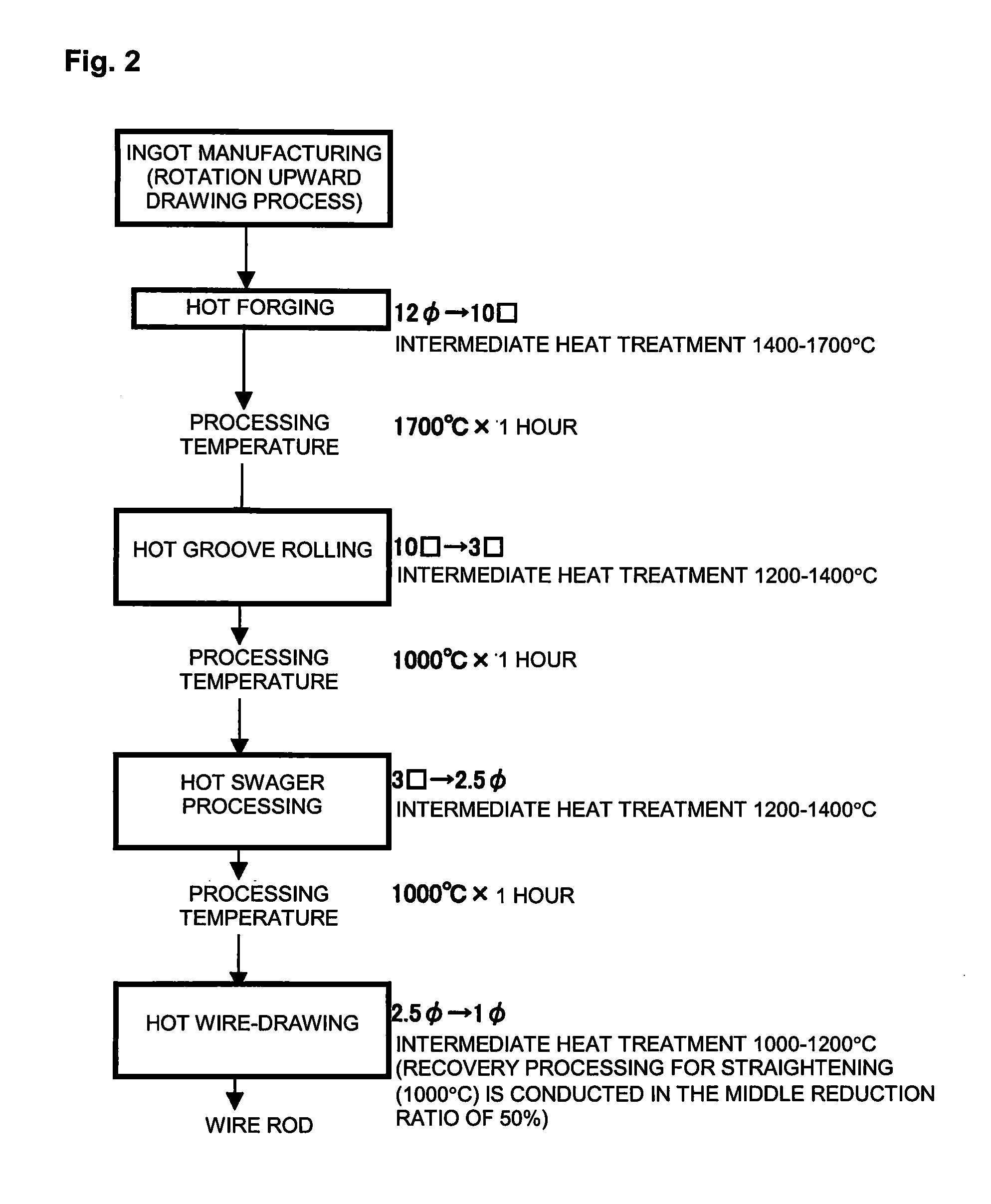Metal Wire Rod Made of Iridium-Containing Alloy
a technology of iridium-containing alloys and metal wire rods, which is applied in the direction of spark plugs, basic electric elements, electrical appliances, etc., can solve the problems of limiting the improvement of compositional adjustments based on alloying, reducing the application range of iridium-containing alloys, and limiting the improvement of high-temperature oxidation resistance based on compositional adjustments, etc., to achieve the effect of enhancing the resistance to high-temperature oxidation
- Summary
- Abstract
- Description
- Claims
- Application Information
AI Technical Summary
Benefits of technology
Problems solved by technology
Method used
Image
Examples
first embodiment
[0031](manufacturing of an iridium ingot)
[0032]From molten alloy of iridium by high frequency melting using a water-cooled copper mold, iridium ingot with 12 mm diameter was manufactured by pulling-up method (pulling-up speed 10 mm / min). The iridium ingot manufactured in the present embodiment were subjected to X-ray diffraction for its midsection. The results are shown in FIG. 1, and the ingot manufactured by the rotation upward drawing process has the appearance of extremely high peak intensity of {100} plane and high crystal orientation.
(wire rod processing)
[0033]The above manufactured iridium ingot was processed into a wire rod through a step shown in FIG. 2. In this processing step, processing were repeatedly conducted at each step of hot forging, hot groove rolling for biaxial pressurization, until target dimensions was obtained. Moreover, at each processing step, hardness of the work piece was appropriately measured to confirm that the hardness is not over 550 Hv. Furthermore...
second embodiment
[0035]In the above first embodiment, an ingot initially having high crystal orientation at the manufacturing was manufactured by drawing process, and this was the wire rod. In the present embodiment, an iridium ingot was manufactured by a typical melting method and processed with increasing crystal orientation to produce the wire rod. For manufacture of the iridium ingot, the ingot with a diameter of 12 mm was obtained by argon arc melting method. Subsequent processing steps were conducted in a similar manner to the first embodiment.
[0036]FIG. 4 shows X-ray pole figure of {111} plane in the cross section of the work piece. As can be seen in the figure, it is recognized that the processing material manufactured from the ingot by argon arc melting method also has good crystal orientation.
third and forth embodiments
[0037]Here, wire rods from Pt alloy with 5% Ir by weight and Ir alloy with 10% Pt by weight were processed by steps similar to the first embodiment. To produce these wire rods, ingots manufactured by drawing process were processed, and processed in the conditions similar to the first embodiment.
PUM
| Property | Measurement | Unit |
|---|---|---|
| temperatures | aaaaa | aaaaa |
| temperature | aaaaa | aaaaa |
| temperature | aaaaa | aaaaa |
Abstract
Description
Claims
Application Information
 Login to View More
Login to View More - R&D
- Intellectual Property
- Life Sciences
- Materials
- Tech Scout
- Unparalleled Data Quality
- Higher Quality Content
- 60% Fewer Hallucinations
Browse by: Latest US Patents, China's latest patents, Technical Efficacy Thesaurus, Application Domain, Technology Topic, Popular Technical Reports.
© 2025 PatSnap. All rights reserved.Legal|Privacy policy|Modern Slavery Act Transparency Statement|Sitemap|About US| Contact US: help@patsnap.com



